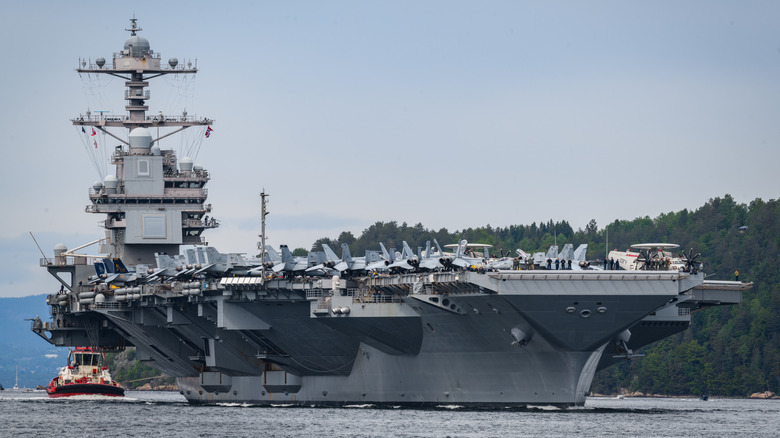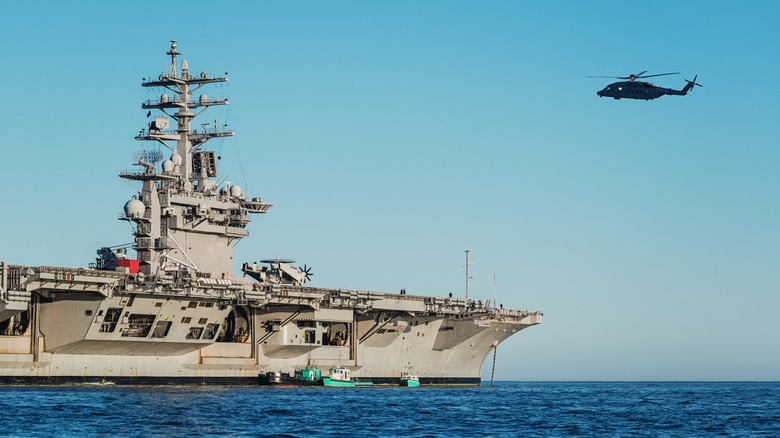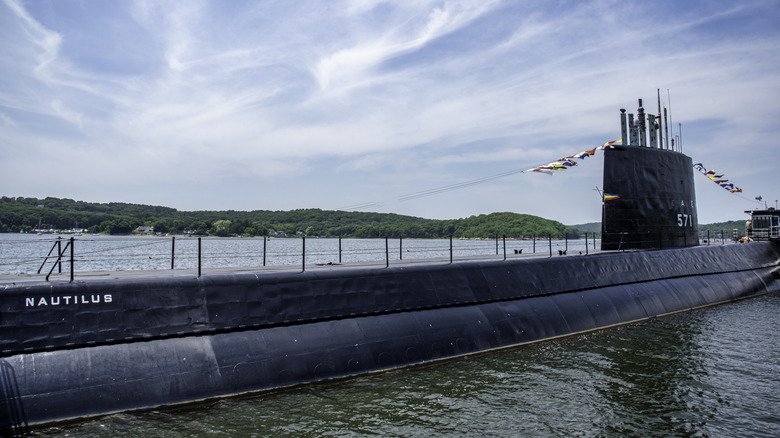What Does The 'CVN' Designation Mean For US Navy Aircraft Carriers?
The aircraft carriers employed by the United States Navy are positively gargantuan vehicles, to put it mildly. We're talking about 99,000 metric tons of steel, measuring in at over 325 meters long. While there are aircraft carriers that are powered by traditional fuel sources like gasoline, trying to make a vehicle that massive move at a steady clip with traditional fuels isn't really cost effective. This is why some of the most prominent carriers in the Navy opt for an alternative means of power: nuclear power, to be precise.
As far back as World War II, United States Navy aircraft carriers have been given a variety of different designations to clarify their purpose in action and, in some cases, what powers them. The aircraft carriers with the designation "CVN," such as the USS Abraham Lincoln, are distinct from their contemporaries thanks to the nuclear power plants that power their movement and many internal systems. Any kind of Naval vessel that utilizes a nuclear power plant receives a special designation, whether it's an aircraft carrier or a submarine.
The CVN designation refers to nuclear-powered aircraft carriers
The very first nuclear-powered aircraft carrier to serve the United States Navy was the USS Enterprise, designation CVN-65, which was commissioned for the Navy's use in 1961. Rather than a traditional fuel-burning engine, aircraft carriers of this nature are equipped with an internal nuclear power plant. Much like a land-based nuclear plant, the one on a carrier continuously splits atoms within its chamber, which generates an immense level of energy. This energy leaves the chamber as heat, which is then converted into pressurized steam. That steam powers the vessel's propulsion and electrical generation turbines, which both propel the ship forward through the water and provide power for the vessel's many tools and amenities.
Prior to implementation of the CVN designation, aircraft carriers powered by traditional means were given a designation of just CV. Interestingly, there does not appear to be a single accepted meaning for either CV or CVN. Some believe that CV is meant to stand for "Carrier Vessel," with the additional N standing for "Nuclear." While the C's meaning is fairly consistent, the confusing part is the V, which some believe actually stands for the French word "voler," or "to fly." In other words, the "C" is the ship, the "V" refers to the aircraft it carries, and the "N" is the nuclear power.
Nuclear-powered submarines have a similar designation with a more formal meaning
It's important for any kind of nuclear-powered vessel to be identified as such, both for the Navy's records and, perhaps more vitally, to facilitate the proper disposal of the nuclear materials following the vessel's decommissioning. For example, in addition to nuclear-powered aircraft carriers, there are also submarines built around the United States in the employ of the Navy with nuclear power plants aboard. These submarines, such as the USS John Walter, receive the designation "SS*N," with the star used to denote the kind of weaponry the vessel employs. The two most common types are SSBN and SSGN, which stand for "Ship, Submersible, Ballistic, Nuclear" and "Ship, Submersible, Guided, Nuclear," respectively.
When a nuclear-powered aircraft carrier or submarine is decommissioned, their nuclear power plants are removed and placed on a barge to be shipped to their final disposal site. Any and all components from the reactor that have been tainted by radiation must be stored in special waste disposal cells to prevent the radiation from leaking out and potentially endangering Naval officers, disposal workers, and the general public. The vessels themselves are then brought to a Naval shipyard, where they're torn down and repurposed for other projects.


